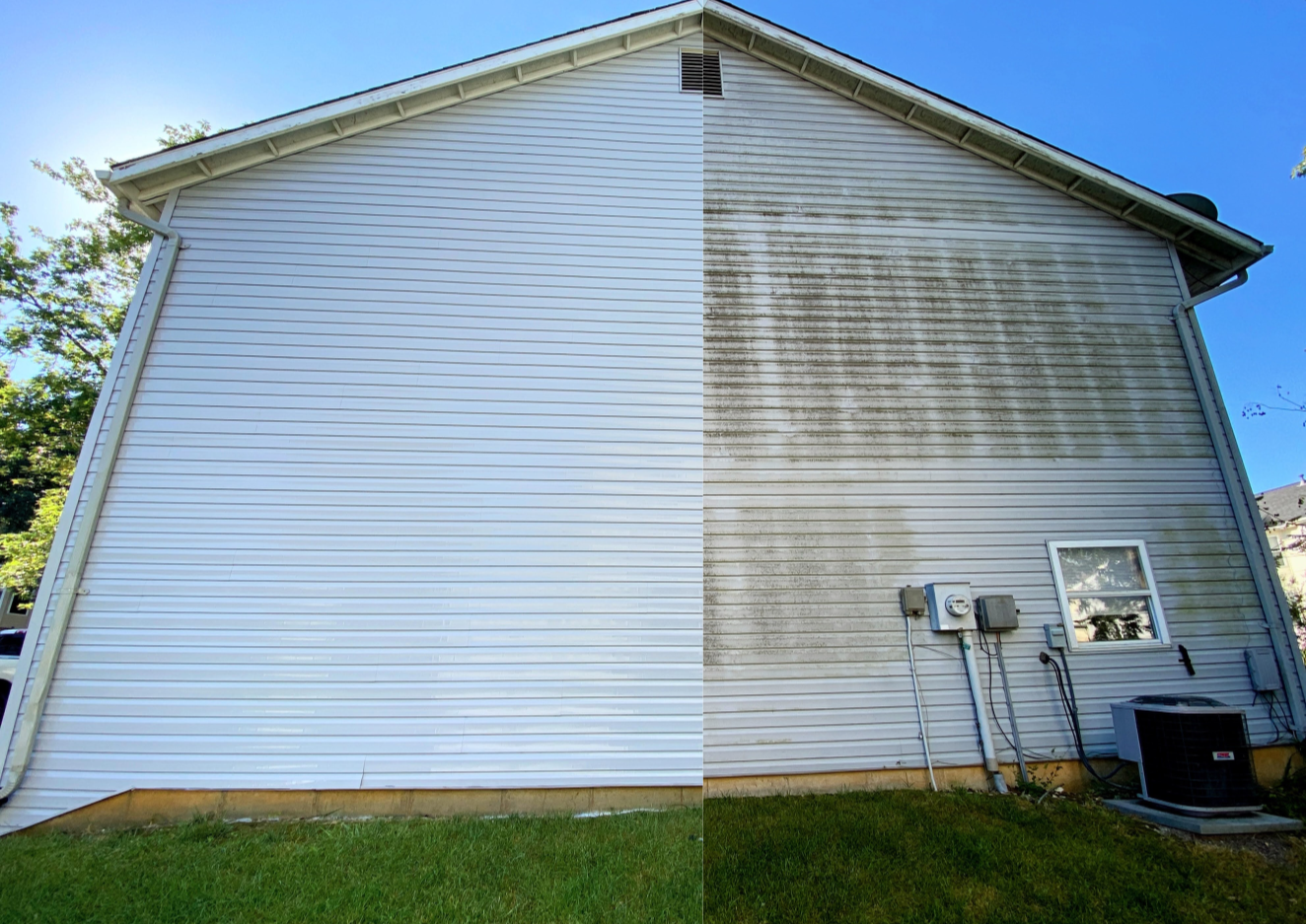Prevent mold and mildew with regular House Washing.
Prevent mold and mildew with regular House Washing.
Blog Article
Understanding the Key Differences Between Pressure Washing and Residence Washing
The distinction between pressure washing and house washing is critical for homeowners looking to maintain their residential property's exterior. While pressure washing uses high-pressure water jets to eliminate stubborn gunk from robust surface areas, residence washing uses a gentler technique that includes environmentally friendly cleansing representatives to shield even more delicate materials.
Definition of Pressure Washing
Pressure washing, frequently referred to as power washing, involves the usage of high-pressure water spray to remove dust, gunk, mold and mildew, mildew, and other pollutants from various surfaces. This technique is especially effective on tough surfaces such as concrete, brick, and stone, making it a suitable option for cleaning driveways, patios, and walkways. The process typically utilizes customized devices that generates water pressure ranging from 1,500 to 3,000 psi or even more, making certain efficient cleansing even in tough problems.
Pressure washing is not limited to exterior surface areas; it can additionally be utilized for numerous applications, consisting of vehicles, outside furniture, and equipment. It is necessary to note that the strength of the water pressure can possibly harm fragile surfaces, such as timber or painted surfaces, if not managed correctly. Selecting the ideal pressure setup and nozzle kind is vital for optimal results.
In addition to surface area cleansing, pressure washing can additionally play a considerable role in preserving the durability of structures by protecting against the accumulation of unsafe impurities that can bring about damage. In general, pressure washing works as a powerful device for boosting sanitation and maintaining the stability of numerous surfaces.
Meaning of Home Washing
Home washing refers to the thorough cleaning of a home's outside surface areas, making use of a mix of low-pressure water and specialized cleansing services. This technique is created to eliminate dust, mold and mildew, mildew, algae, and other impurities that build up gradually, maintaining the aesthetic charm and structural integrity of the property.
Unlike pressure washing, which utilizes high-pressure streams of water, residence washing highlights the use of reduced pressure to avoid damage to fragile surfaces such as siding, roof, and painted coatings. The cleaning solutions used are typically eco-friendly and developed to effectively take on certain issues, making sure a comprehensive clean without compromising the setting or the stability of the materials being dealt with.
Residence washing is especially useful for preserving the look of plastic, wood, stucco, and brick outsides. Normal home washing not just improves aesthetic charm yet additionally adds to the durability of a home's outside surfaces by reducing the effects of hazardous microorganisms and toxic wastes. Home owners that site are encouraged go to this site to schedule residence washing regularly to guarantee their home stays in ideal problem, thus securing their financial investment.
Key Methods Utilized
In the world of outside cleaning, numerous techniques are used to accomplish optimal outcomes throughout home washing. The key approach entails soft washing, which makes use of low-pressure water incorporated with specialized cleaning services. This approach efficiently removes dust, algae, and mildew without harmful fragile surfaces such as wood or repainted home siding.
One more key technique is the use of a surface cleaner attachment, which is particularly efficient for flat surface areas like outdoor patios and driveways. This device supplies consistent cleaning by making use of rotating jets that cover a larger location, making certain constant outcomes.
Chemical application is also crucial in residence washing. Cleaners such as sodium hypochlorite or naturally degradable cleaning agents are frequently utilized to break down difficult spots and organic growth. House Washing. Proper dilution and application approaches are important to minimize any prospective damages to plants or landscaping
Ideal Surfaces for every
When identifying the suitable cleansing technique, it's important to consider the kinds of surfaces included. Pressure washing, which uses high-pressure water jets, is best suited for hard, sturdy surfaces that can withstand extreme pressure. Common applications consist of driveways, patios, walkways, and decks. These surfaces typically gather tough discolorations, such as oil, grease, and mold, which call for the effective cleansing activity offered by pressure washing.
On the various other hand, home washing usually uses a softer technique, using low-pressure water integrated with specialized detergents. House washing efficiently gets rid of dirt, plant pollen, and mold and mildew without running the risk of damage to the outside finish.
Advantages and Disadvantages

On the various other hand, home washing makes use of a gentler method, often utilizing a combination of low-pressure water and cleaning remedies. This approach is much safer for painted look at this now surface areas, home siding, and roofing systems, helping to protect their stability. The main disadvantage of home washing is that it might not remove deeply embedded dirt or persistent stains as successfully as pressure washing, which can require even more time and several applications.

Verdict
In recap, pressure washing and residence washing serve distinct functions in exterior cleaning. Pressure washing employs high-pressure water streams, making it ideal for resilient surfaces and effective versus difficult discolorations. Conversely, home washing uses a low-pressure technique with biodegradable options, guaranteeing the safety and security of fragile products. Understanding these distinctions promotes informed choices relating to the suitable cleansing approach based upon surface area type and problem, ultimately advertising effective maintenance and long life of outside surface areas.
Report this page